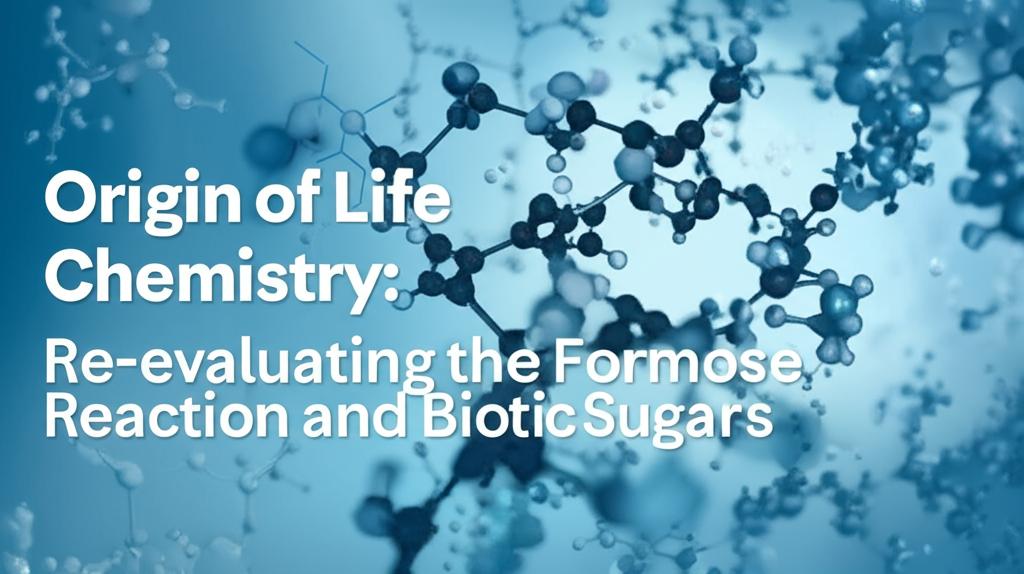The formose reaction, a process first described in the 19th century, has long been a cornerstone in theories about the prebiotic origins of life, particularly for its potential to synthesize sugars from simple formaldehyde. Formaldehyde would have been present on early Earth. These sugars, especially ribose, are crucial components of RNA and DNA. However, the classic formose reaction presents significant challenges when considered in the context of early Earth conditions, leading to ongoing re-evaluation and the search for more plausible pathways to biotic sugars.
One major issue with the traditional formose reaction is its lack of selectivity. Instead of producing a neat set of biologically relevant sugars, it yields a complex, tar-like mixture of various sugar structures and other organic compounds. Isolating specific sugars like ribose from this "formose tar" in meaningful quantities and purity under plausible prebiotic conditions is highly problematic. Furthermore, the reaction often requires relatively high concentrations of formaldehyde and specific alkaline catalysts, conditions that may not have been widespread or stable on primitive Earth. The resulting sugars are also relatively unstable, especially under the alkaline conditions that promote the reaction.
Recent research has focused on addressing these limitations. Scientists are exploring alternative catalysts and environmental conditions that could have guided the reaction towards a more selective production of life's building blocks. For instance, minerals common on early Earth, such as borate minerals, have been shown to stabilize ribose and other sugars, potentially sequestering them from the complex mixture and protecting them from degradation. Borates can form complexes with sugars, influencing their formation and stability, and possibly guiding the formose reaction towards producing more biologically relevant pentoses.
Furthermore, alternative or modified pathways branching from or competing with the core formose reaction are being investigated. The role of glycolaldehyde, a key intermediate in the formose reaction, is under scrutiny. Studies have explored scenarios where glycolaldehyde and glyceraldehyde, another simple sugar, could have been formed through different routes or concentrated in specific environments, leading to more controlled sugar synthesis. Some research suggests that photo-reduction of CO2 or other geochemical processes could have generated these crucial precursors.
The search for biotic sugars also extends beyond the formose reaction itself. Researchers are investigating other potential sources and synthetic routes. For example, the sulfidic chemistries in hydrothermal vent environments or reactions involving cyanide derivatives have been proposed as alternative pathways for generating sugar-like molecules or their precursors. The interplay between different kinds of molecules, such as amino acids or nucleobases with early carbohydrate chemistry, is another area of active investigation, as these interactions could have stabilized or selected for particular sugar structures.
The re-evaluation of the formose reaction underscores a broader shift in origin-of-life research: a move towards understanding prebiotic chemistry as a series of interconnected chemical systems and networks rather than isolated reactions. The focus is now on identifying specific geological environments and chemical scenarios on early Earth that could have fostered the selective production and stabilization of life's essential molecules, including the sugars that form the backbone of our genetic material. While the formose reaction remains a compelling concept for generating sugars from simple starting materials, its role in the origin of life is likely more nuanced, possibly operating within specific geochemical niches or in conjunction with other chemical processes that provided the necessary selectivity and stability for life's building blocks to emerge.

